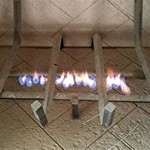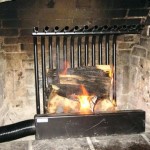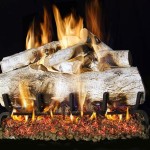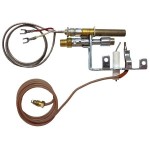Constructing an Outdoor Brick Fireplace
An outdoor fireplace serves as a focal point for outdoor living spaces, providing warmth, light, and an inviting atmosphere. Constructing one from brick offers durability, classic aesthetics, and design flexibility. This article details the key steps involved in building an outdoor brick fireplace, highlighting essential considerations for a successful and safe project.
Planning and Preparation
Before commencing construction, thorough planning is paramount. This phase involves determining the optimal location, obtaining necessary permits, and designing the fireplace structure. The chosen location should be a safe distance from flammable materials such as trees, fences, and overhanging structures. Local building codes and regulations often dictate specific setback requirements and may necessitate obtaining a building permit before starting any construction. Failing to acquire necessary permits can lead to fines and delays.
Designing the fireplace requires careful consideration of its size, shape, and style. The dimensions should be proportionate to the surrounding space, and the design should complement the existing architectural features of the property. A detailed blueprint or sketch is essential, outlining the precise measurements and materials required. This visual representation guides the construction process and minimizes errors. Consider the intended use of the fireplace; will it primarily be for ambiance, cooking, or both? This will influence the size of the firebox and the inclusion of features like a cooking grate or pizza oven.
Material selection is another crucial aspect of the planning phase. Bricks specifically designed for outdoor use are essential to withstand the elements. Firebricks, which are highly heat-resistant, should line the firebox to protect the structural brick from extreme temperatures. Mortar used for bricklaying must also be suitable for outdoor applications and capable of withstanding freeze-thaw cycles. Other materials include a concrete foundation, flue liner, and potentially decorative elements such as stone or tile.
Building the Foundation and Firebox
A solid foundation is crucial for the stability and longevity of the brick fireplace. The foundation must be level, stable, and capable of supporting the weight of the structure. Typically, a concrete slab serves as the foundation, extending beyond the perimeter of the fireplace to provide adequate support. Excavate to a depth below the frost line in colder climates to prevent shifting due to freezing and thawing. Pour concrete into the excavated area, reinforcing it with rebar for added strength. Allow the concrete to cure completely before commencing bricklaying.
The firebox is the heart of the fireplace and must be constructed with careful attention to detail. Begin laying bricks around the perimeter of the foundation, ensuring they are level and plumb. Use a bricklaying bond, such as the running bond or stack bond, to interlock the bricks and provide structural integrity. Apply mortar evenly between the bricks, creating a strong and watertight seal. As the walls of the firebox rise, incorporate firebricks to line the interior. Firebricks are typically thicker and more heat-resistant than standard bricks, providing crucial protection against the intense heat of the fire.
The design of the firebox should include a proper opening for air circulation, allowing the fire to burn efficiently. A smoke chamber, located above the firebox, helps funnel smoke into the chimney. The smoke chamber should be constructed with smooth, angled walls to facilitate efficient smoke removal. Proper construction of the firebox and smoke chamber is critical for preventing smoke from entering the surrounding area.
Constructing the Chimney and Finishing
The chimney is responsible for drawing smoke away from the fireplace and releasing it into the atmosphere. It must be tall enough to create sufficient draft and prevent downdrafts, which can cause smoke to enter the surrounding area. The chimney should be constructed with the same attention to detail as the firebox, using durable bricks and mortar suitable for outdoor applications. A flue liner, typically made of clay or stainless steel, should be installed inside the chimney to protect the brick from the corrosive effects of flue gases.
As the chimney rises, ensure it remains plumb and square. Use a level and plumb bob to maintain accuracy. The top of the chimney should be capped with a spark arrester to prevent embers from escaping and potentially igniting nearby vegetation. The spark arrester should be made of a non-corrosive material such as stainless steel.
Once the structural components are complete, attention can be turned to finishing details. This might include adding decorative elements such as stone veneer, tile accents, or a custom mantel. These elements enhance the aesthetic appeal of the fireplace and personalize the design. Consider adding a hearth extension in front of the firebox to protect the surrounding area from sparks and embers. The hearth extension should be made of a non-combustible material such as brick, stone, or concrete. Finally, clean the entire fireplace thoroughly, removing any excess mortar or debris. Allow sufficient time for the mortar to cure completely before using the fireplace. A successful outdoor brick fireplace enhances outdoor living spaces and provides a source of warmth and enjoyment for years to come.

Outdoor Fireplace With Bench Seating W Tips From A Professional Mason

How To Build An Outdoor Fireplace Today S Creative Life

Small Outdoor Brick Fireplaces Related Post From Diy Fireplace Plans

Outdoor Brick Fireplace Landscaping Network

Stonetutorials Living Stone Masonry

How To Build A Brick Fireplace Diy Part 1 Of 5

Outdoor Fireplace Kits Masonry Stone

How To Build An Outdoor Fireplace Step By Guide Buildwithroman

Out Door Brick Fireplaces Are My Specialty In 2024 Outdoor Fireplace Patio Backyard

Outdoor Combo Fireplace And Oven Round Grove S
Related Posts








